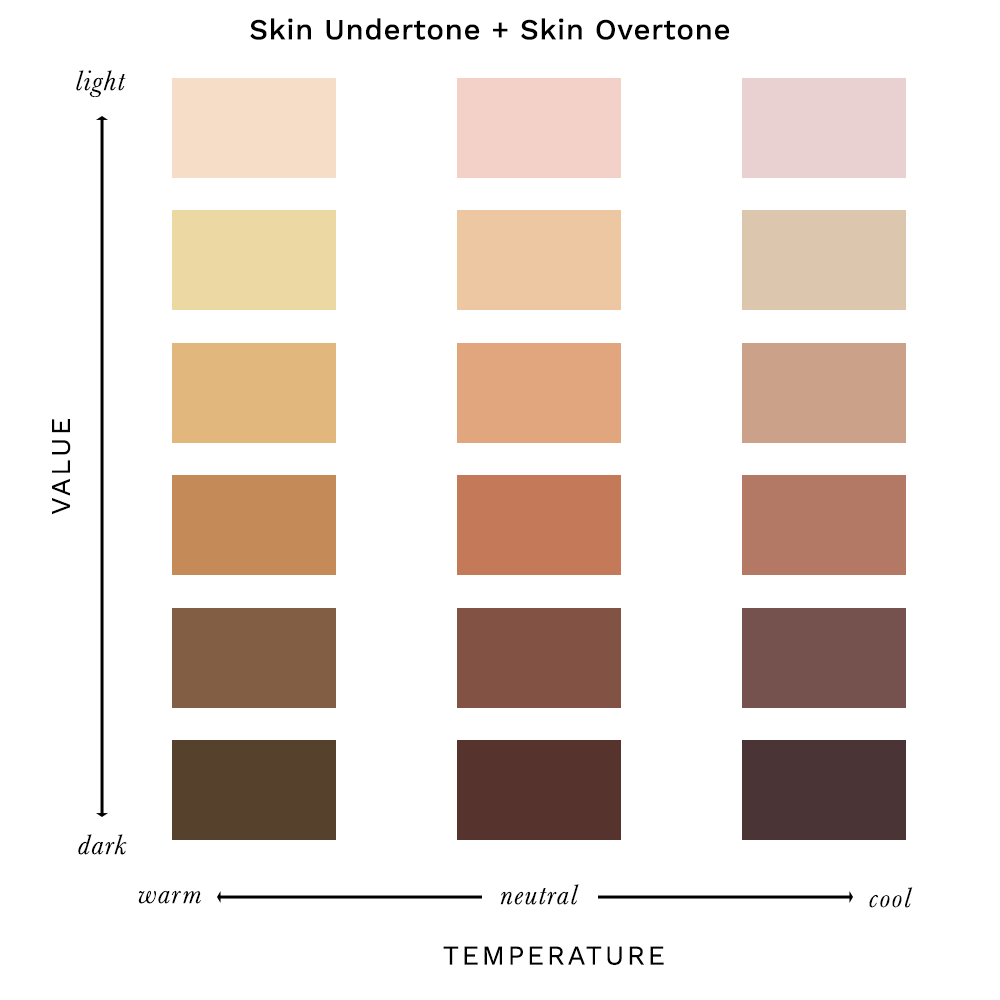Address
430 E 29th St, New York, NY 10016, United States
Need help or have a question?
Contact us at: hello@doctormier.com
Address
430 E 29th St, New York, NY 10016, United States
Need help or have a question?
Contact us at: hello@doctormier.com

Looking for your tan skin tone? It's not always possible for people to determine their tone correctly, which can make it difficult to select tanning products and makeup. But we're going to show you how to do it yourself! Firstly, let's understand what types of skin tones are and then determine your tonality in 4 basic ways. In addition, we'll share some beauty routine tips. Let's do it!
There are many different tones, some common — light, dark, Mediterranean, African American, Asian, and Indian. Based on this, skin tones can range from light porcelain to very dark.
Each person’s dermis tonality varies depending on their background and genetics. A broad range of epidermis tones can be found worldwide, but most people are somewhere in the middle. The skin tone of a white person is somewhere around tawny to brown, while a colored person's skin will range from dark chocolate to black.
When it comes to tan skin tone, most people think of a whole palette of different shades. But what is the best way to identify them?
Light tan is usually characterized by a large amount of white and yellow pigment in the dermis layer, where is the skin's color is determined. The dark tan skin tone is characterized by a more uniform distribution of pigmentation, which allows for better coloration.
This means that the darker the epidermis tone, the more pigment there is in the dermis layer. And the more pigment, the more coloration can be achieved.
If you've ever shopped for makeup products, you are familiar with the terms “cool”, “warm”, and “neutral” describing different shades of tanned skin tonality. These terms refer to the undertone — the subtle, muted color beneath your skin's surface which doesn't change with your determined tone. Your undertone is an underlying shade that you just can't be without.
Figuring out your subtonal color is fundamental to understanding how to properly apply makeup, choose clothes, and more. Failure to learn the different subtones ensures that the greatest color potential will not be realized. Let's highlight the main types of undertones:
The surface color of your skin tone, or the first thing you see when you look in the mirror, may appear a red shade, but your undertone might be gold or yellow. It all depends on the lighting and the warmth of the light, which can distort your true skin tone.

The origin of your ancestors and your ethnic group may affect your skin's level of melanin. If your native region is hot, your dermis is likely to have more of this pigment.
So now we know that our genes decide how light or dark your skin can be, but exposure to light can boost it, too. If you tend to be tanner than average and remain indoors most often, your skin tone will likely look ivory. If you naturally have a darker epidermis, and you spend a lot of your time outdoors expending sunbathing or simply being outside, you are sure to get darker with ongoing exposure to sunlight.
So, these factors determine the primary elements that influence your skin's appearance:
If you need to figure out what skin complexion is, you should consider your DNA and your outdoor exposure. Knowing your dermis pigment and genetics, as well as the effects of sun exposure on your color, can help you more clearly identify your skin tone.
Now that we know all the details about our skin tone, we can determine our tonality. For this purpose, we have prepared four ways to do it ourselves. Check them out and find the perfect one that is closest to you:
Find a natural light source in your home or outdoors. Ensure that you thoroughly wash your face before referring to your tone. Wait approximately 15 minutes, then assess natural light, as different types of sunshine change the look of your skin. Take a close look at the derma. What is it like? Write down those characteristics for yourself.
In case silver complements your skin better than gold, you may have cool dermis tonalities. Accordingly, if you have a warm tanned skin color, gold seems preferable. So take a look at the jewelry you wear most often, and then determine your undertone.
Watch your veins in natural daylight to decide their coloration. When the veins are:
Do you frequent the beach to get a tan? If not, chances are it can burn quickly even with a little exposure to direct sunlight. Examining the nature of your derma's sensitivity to UV rays can help you assess its depth. Those who are tawny effortlessly have average or medium-tanned skin, whereas those who burn simply likely have lightly tanned skin.

Also, when you have already done these methods, you can match the main tonality with the undertones as shown in the picture above, highlighting your skin tone. It takes a couple of minutes and gives the desired result of a settled skin tone with minimal effort.

If you want to achieve a tanned skin tone and make it even better, the following tips will help you:
The best way to determine your skin tone is to use all 4 of our methods, namely: observe your skin in the mirror in natural light; conduct a gold/silver compatibility test; recognize your vein color; and study your skin's reaction to the sun. This way, you can find exactly the right shade for you.
Don't forget to take care of your skin and apply an SPF product every time you go outdoors during the hot periods of the year and moisturize after tanning. By deciding your tawny complexion correctly, you will be able to choose the right clothes, and makeup, and also choose the right time for you to get the perfect tan.
It is not possible to permanently change your skin tone and make it lighter, even with surgery, because our DNA has specific data concerning dermis color. However, if you have a tan, you can make your skin lighter, you just have to wait until the tawny disappears. It is not recommended to use aids in the form of creams for this purpose, as this can lead to irritation and other skin conditions.
Often, it’s all about having a too-light skin tone. Predisposition to tanning is genetically determined and depends on a person’s phototype (individual sensitivity to UV rays). In addition, a lack of opportunity to get a tan may be due to a small amount of melanin, which influences the color of the skin.
It is possible, but still not recommended, as it can harm your skin. If you are in the sun when the UV index is 1-2, you can tan for a long time, but if the index is higher, it is worth observing the right time frame for a suitable tanning index. The ideal UV index for sunbathing is level 3-5, then you can stay a maximum of 3-4 hours with constant use of SPF cream.